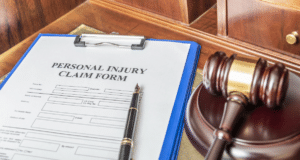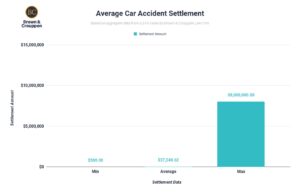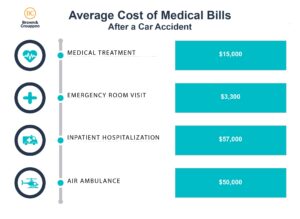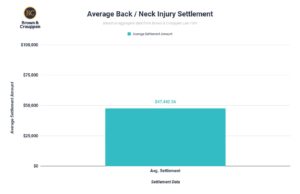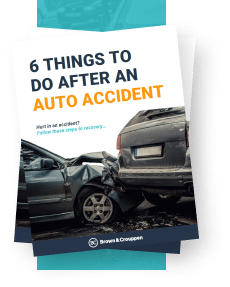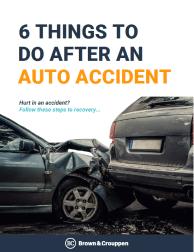

Use our legal checklist to learn what to do after an accident and understand key legal considerations for recovering financial compensation.
Understanding Underinsured Motorist (UIM) Coverage
Underinsured motorist coverage is a type of auto insurance designed to protect you if you’re involved in an accident with a driver who has insurance, but their coverage limits are too low to fully cover the damages or medical expenses resulting from the accident. This coverage steps in to fill the gap between the at-fault driver’s insurance limits and the actual cost of your injuries or damages.
UIM provides additional financial protection in case you’re hit by a driver whose liability insurance isn’t sufficient to cover the full extent of your losses. It typically covers medical expenses, lost wages, and other damages related to bodily injury. In some states, it may also cover property damage.
If you’re in an accident with an underinsured driver, you would first file a claim against their insurance. Once their policy limits are reached, your underinsured motorist coverage would cover the remaining costs up to the limits of your policy. The coverage limits are chosen when you purchase your auto insurance policy. It’s important to choose limits that reflect your potential needs in an accident.
Similarly, if you have no insurance but the other driver was at fault for the accident, you still may be able to recover compensation for damages (although limited).
Factors that Affect How much You Can Get from an Underinsured Motorist Claim
1. Coverage
If you don’t carry underinsured motorist coverage on your auto policy, you are most likely out of luck. In some circumstances, UIM coverage from other involved parties may apply, but it’s always best to carry your own policy. Additionally, some UIM policies have “set off” language, meaning that the carrier can reduce the amount of coverage you carry by the amount of liability coverage that applied to your case.
You need to have the underlying liability policy limits extended before you can obtain UIM (either for you individually or for the global limits), and UIM carriers will often require that you get their approval on the liability settlement first before making a UIM eligibility determination. Ultimately, the maximum that you could be eligible for under a UIM policy is how much coverage you purchased. If you purchased a $100,000 per-person UIM policy, then the most you can get out of the coverage is $100,000. Nevertheless, just because you purchased a UIM policy does not mean you will automatically receive an offer of the policy limits. The UIM offer will depend on other factors as well.
2. Liability
The concept of fault in a motor vehicle collision is essentially the same across the United States. Whose actions (or inactions) caused the wreck? However, state laws vary on how you calculate damages based on fault. Missouri follows “pure” comparative negligence laws, abiding by the rule that the plaintiff’s percentage of fault reduces their compensation reward, regardless of what their percentage of fault is. Under pure comparative negligence models, the injured party may receive compensation for their injuries even if they were more than 50% at fault for the wreck, though their recovery will be reduced by their shared percentage of fault. Missouri is a pure comparative fault state.
How much money an injured person receives in a settlement is based on two primary considerations: how severe the injuries are and who is at fault for those injuries. If you are at fault for the crash, then naturally, the other party does not have to pay for the resulting injuries.
Some crashes make determining fault an “open and shut” case. If you are stopped at a red light and rear-ended, there’s little to no way that the other party can claim you were at fault. Likewise, if you are riding as a passenger in an accident, the fault can very rarely be shifted to you (unless, for example, you are pulling on the steering wheel or causing such a serious disruption in the vehicle as to prevent the driver from operating the vehicle safely. However, if you are driving within the speed limit and a vehicle cuts in front of you and then brakes abruptly, then you may be able to establish fault with the other driver, either partially or entirely (but you have the burden of proof).
3. Damages
- Medical Bills: As the injured party making a claim, you have the burden of proof not only that the other party is at fault for your injuries, but also that you suffered the actual injuries, that the incident caused the injuries, and that you experience symptoms and limitations as a result of your injuries. The insurance company will not take you at your word. They want to pay as little as possible on your claim. You can prove your injuries and limitations by providing medical bills and records as well as information from your employer for lost wages (or tax returns if you are self-employed). You may also provide contact information for witnesses to the incident in question or “damages” witnesses who can speak to how you functioned before the incident versus after with your related injuries. However, the medical bills and records are generally the most credible (i.e., believable) evidence of your injuries.
- Lost Wages or Loss of Business Expectancy: If you work as a W-2 employee with a regularly scheduled hourly job, then calculating lost wages is fairly straightforward. How many days (hours) did you miss because of the wreck (either to recover or to attend medical appointments)? Now multiply that by your wage. However, much of the U.S. workforce performs work that isn’t compensated in this traditional manner. An experienced plaintiff’s lawyer can assist in calculating lost wages or loss of business expectancy (where the injured party owns a business and loses clients or contracts as a result of their injury).
- Pain and Suffering: In our civil justice system, the only recovery that the injured party can demand is monetary compensation. Money can never make an injury whole and given a choice, injured parties would rather never experience the pain and limitation of their injury rather than receive any amount of money. However, like an egg that cannot be unscrambled, the courts cannot take away the injury itself. What they do allow is for the at-fault party to provide monetary compensation to the injured person as a means of accountability.
- Property Damage: Obtaining repair or replacement estimates is crucial when making a property damage claim. Insurance companies may require multiple estimates to ensure accuracy and fairness in the evaluation of the claim. Obtaining your own estimates can help ensure obtaining a fair and reasonable estimate for the value of the vehicle if the car is determined to be a total loss.
Beyond the immediate repair costs, consideration must be given to the diminished value of the damaged property. This aspect acknowledges that even after repairs, a vehicle may not command the same market value as it did before the accident.
Insurance policies often include provisions for a rental car while the damaged vehicle is being repaired. Confirming and understanding the terms of this coverage helps alleviate the practical challenges posed by the unavailability of one’s primary means of transportation.
Get Help with Your Personal Injury Case from Brown & Crouppen Law Firm
If you or a loved one has suffered injuries from an underinsured motorist in St. Louis, Kansas City, or surrounding areas in the Midwest, you may be eligible to receive financial compensation for lost wages, medical expenses, pain and suffering, and other damages.
Getting started is easy. Get help from our legal team by calling us at 888-795-0694 for a free consultation, or get in touch with a Brown & Crouppen attorney by requesting a free case evaluation online. And remember, there’s no upfront cost to you — if you don’t get paid, we don’t get paid.
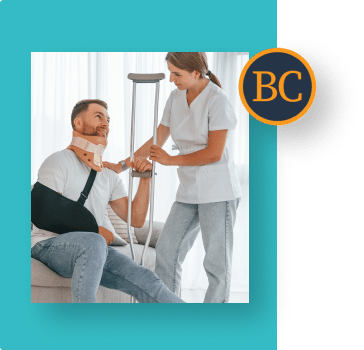
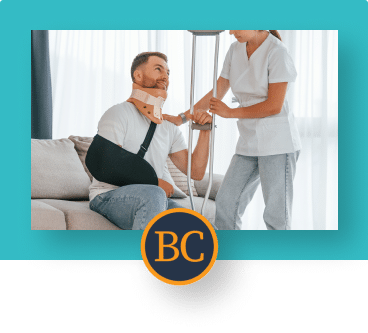
Were you injured in an accident due to someone else’s negligence? Get legal help from the most effective injury law firm in the Midwest.
Frequently Asked Questions
Are Hit & Run Accidents Covered By Underinsured Motorist Coverage?
For you, I am coverage. To apply, there must be underlying liability coverage. In cases where a hit-and-run actor has left the scene and remains unnamed and unfound, UIM will never apply because there won’t be a liability carrier involved. However, when someone commits a hit and run and then is later located and we can identify insurance coverage, UIM may apply so long as you are able to capture the full amount of that liability policy.
Do I Need A Lawyer For An Underinsured Motorist Claim?
While you do not need a lawyer to make an underinsured motorist claim, it can help. Experienced personal injury attorney can help navigate all the various coverage issues and exclusions that may apply. Under your UIM policy, they may also be able to identify other parties involved who may carry UIM as well.
Is Underinsured Motorist Coverage Required?
Requirements for underinsured motorist coverage vary by state. UIM coverage is typically not required, and most states make it optional, including Missouri, Illinois, and Kansas. Underinsured motorist coverage (UIM) is different from uninsured motorist coverage (UM), which applies when the at-fault driver has no insurance at all. Some policies combine these coverages under a single provision.
Will Filing an Underinsured Motorist Claim Raise My Insurance Rates?
Because UIM is a no-fault provision of auto insurance coverage, most states forbid your insurance carrier from increasing your premiums based on making a claim. However, your insurance carrier may offer discounts when you go for long periods of time without making a claim, and they may remove those discounts. Nevertheless, the value of making the claim is likely going to be in excess of the cost of losing the discount.

